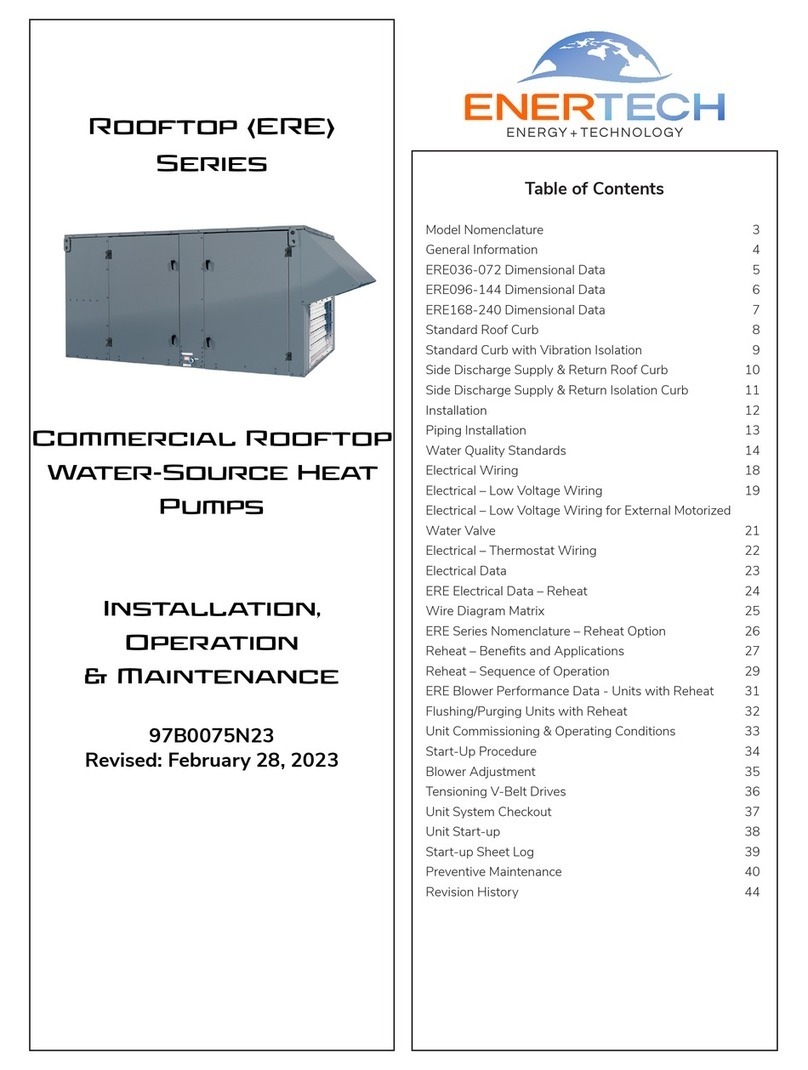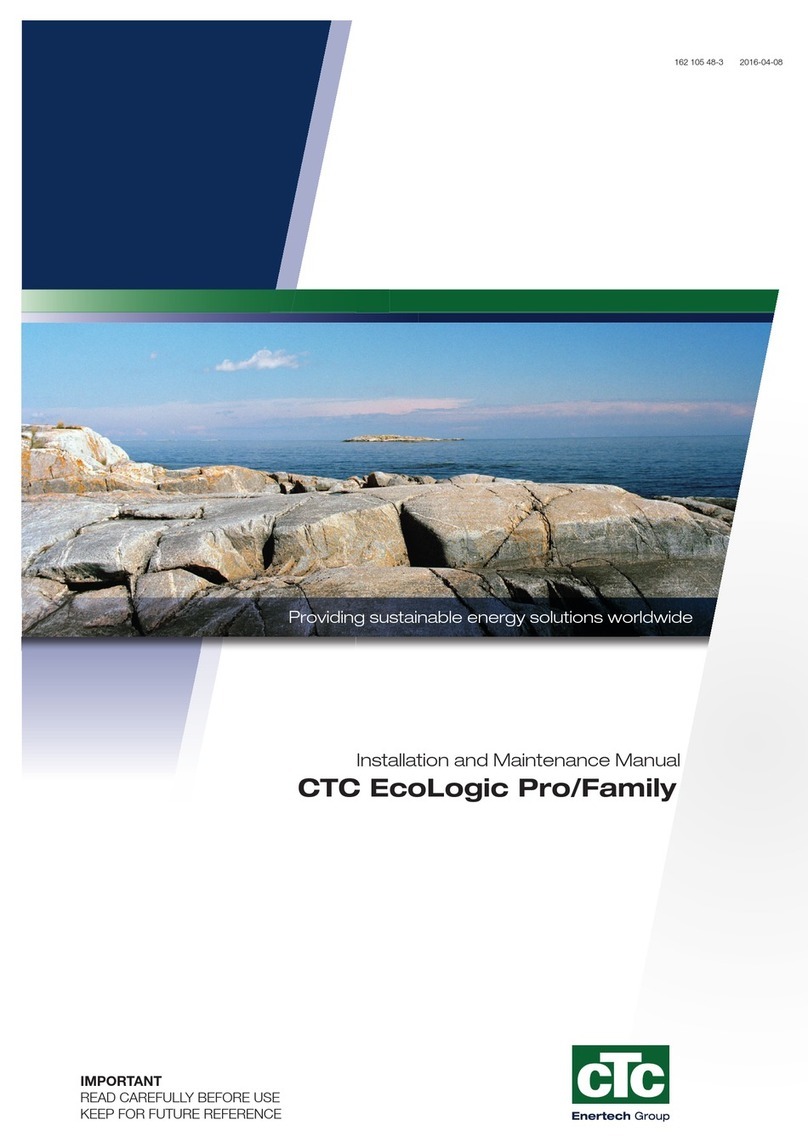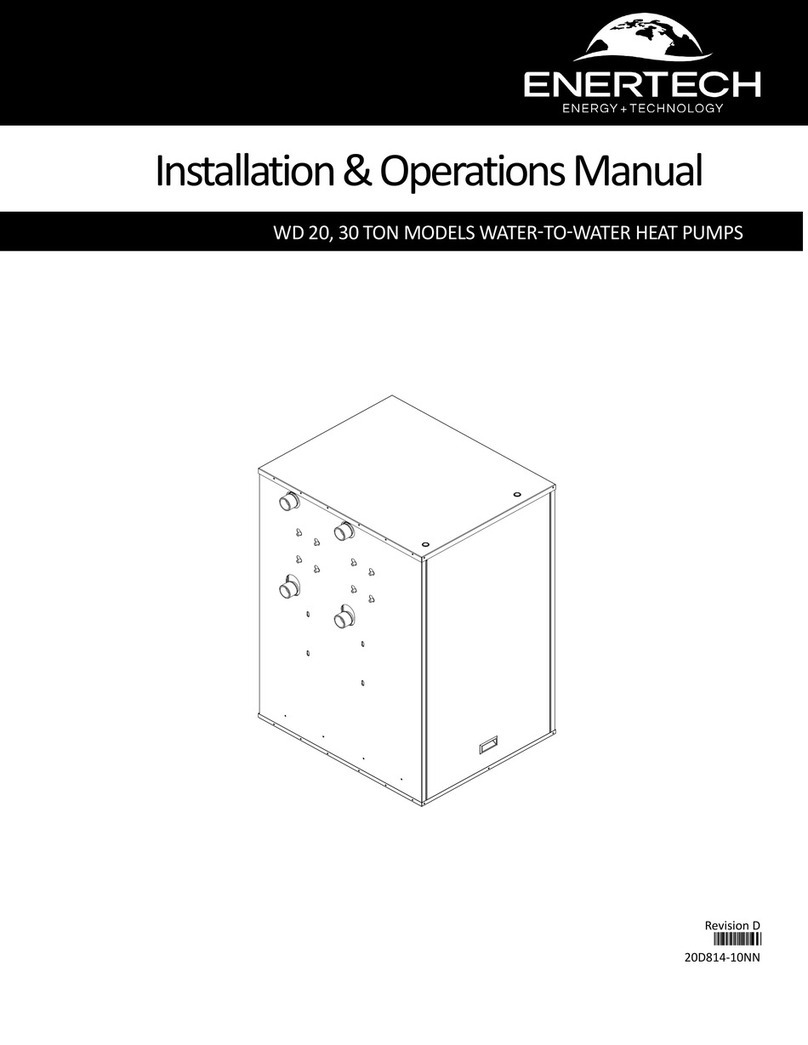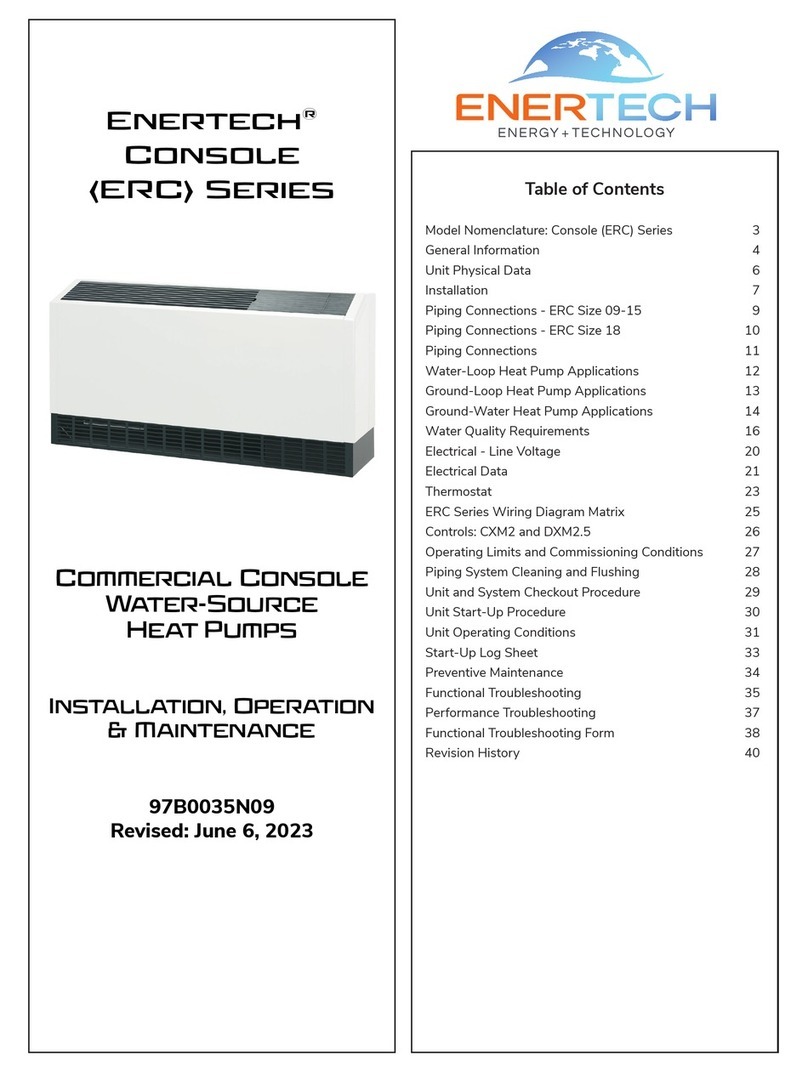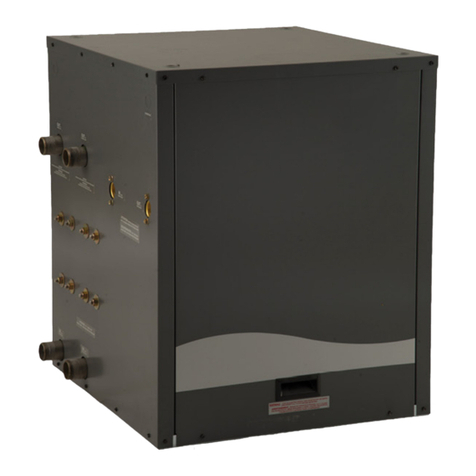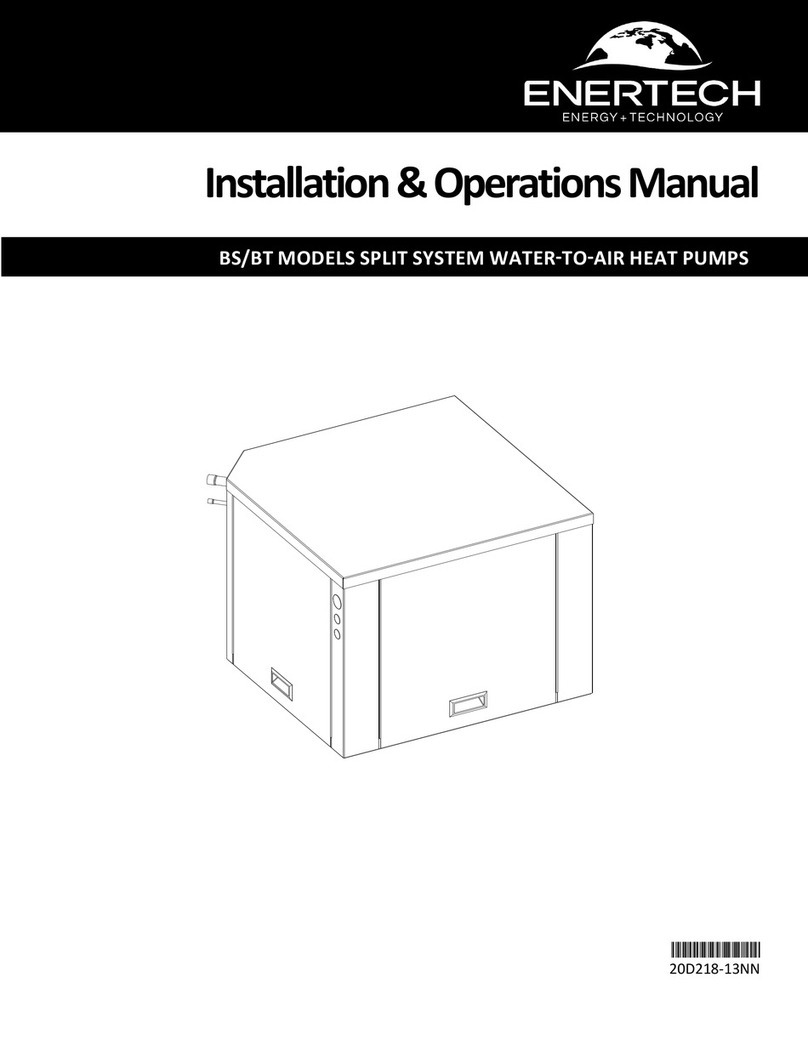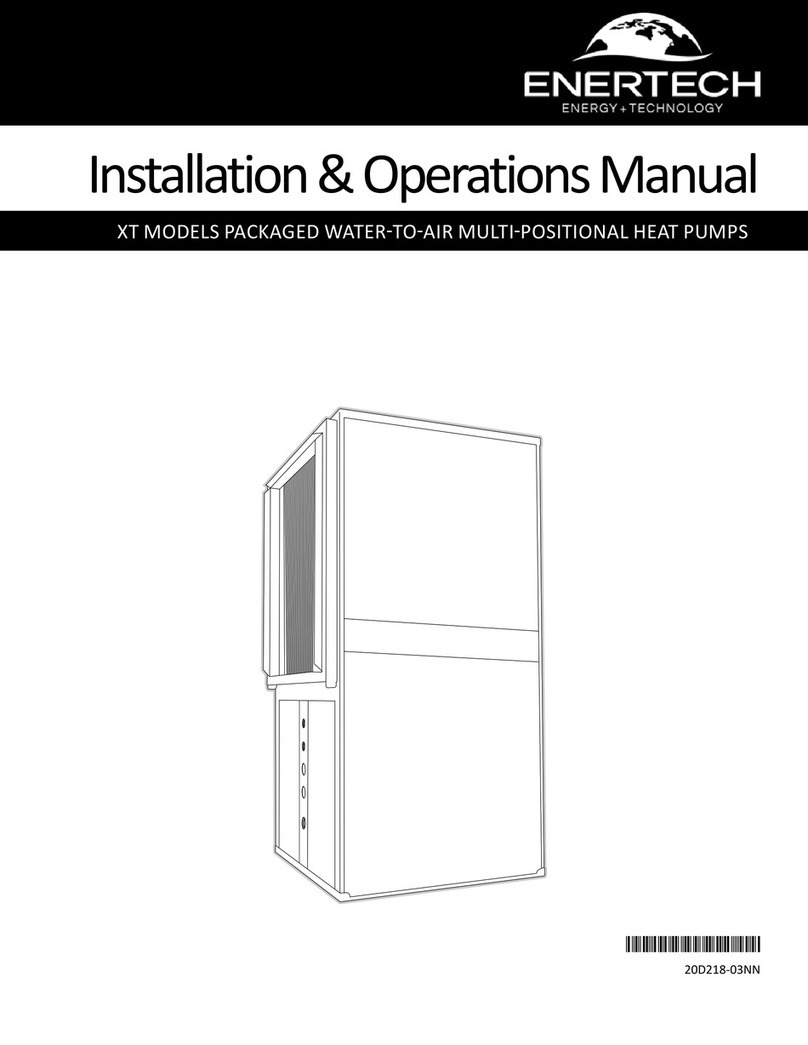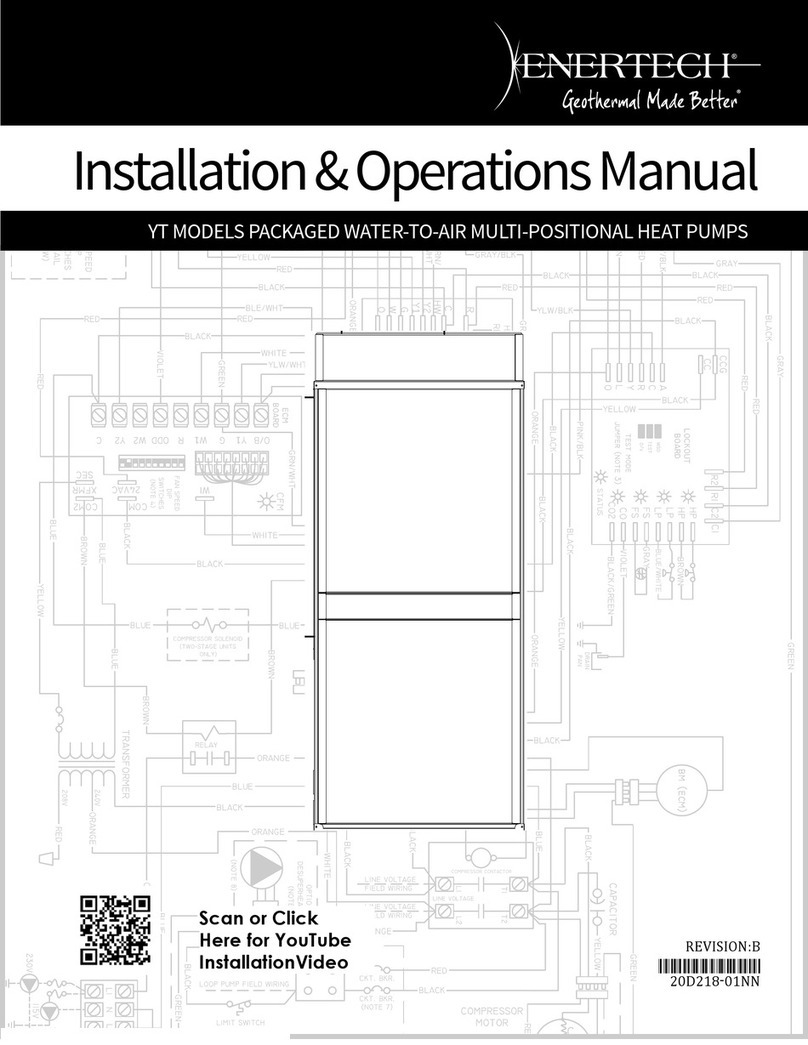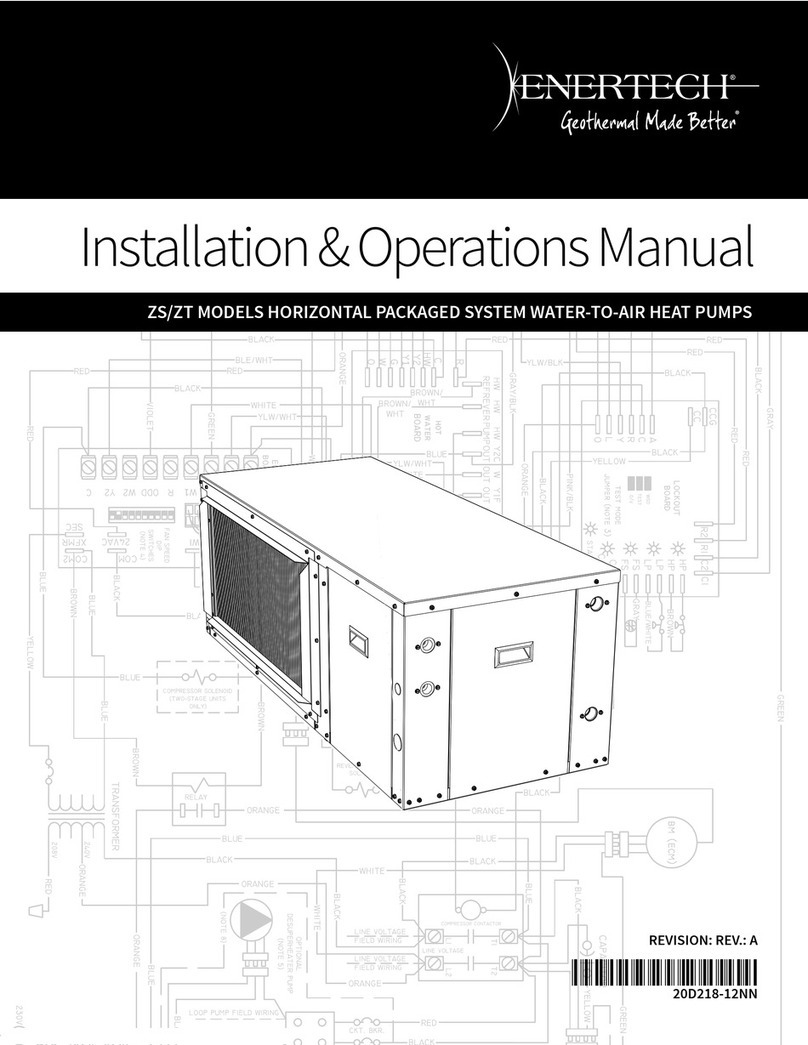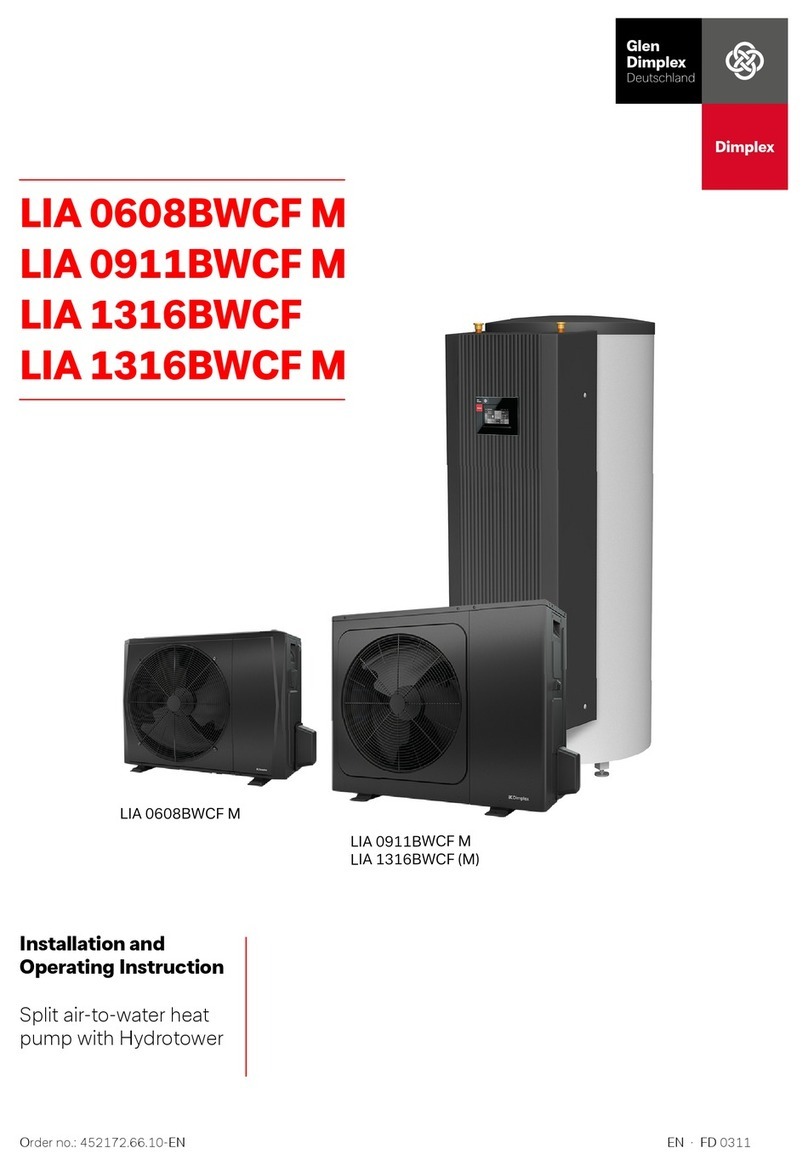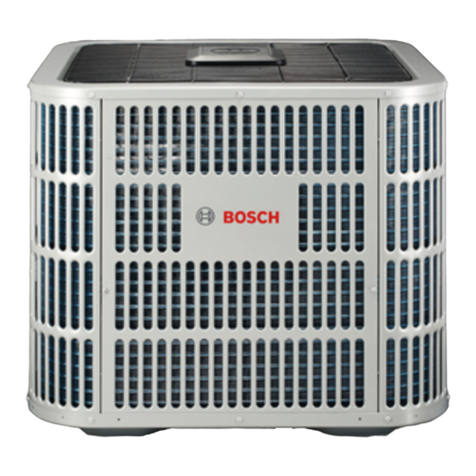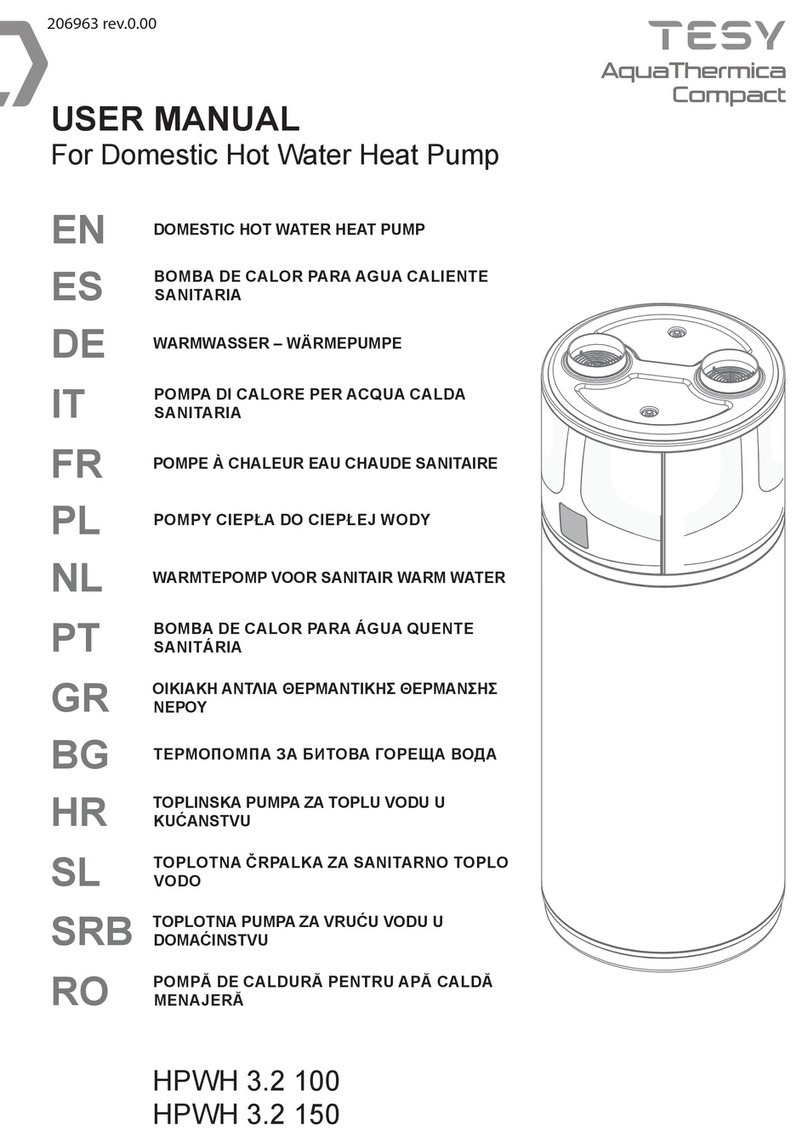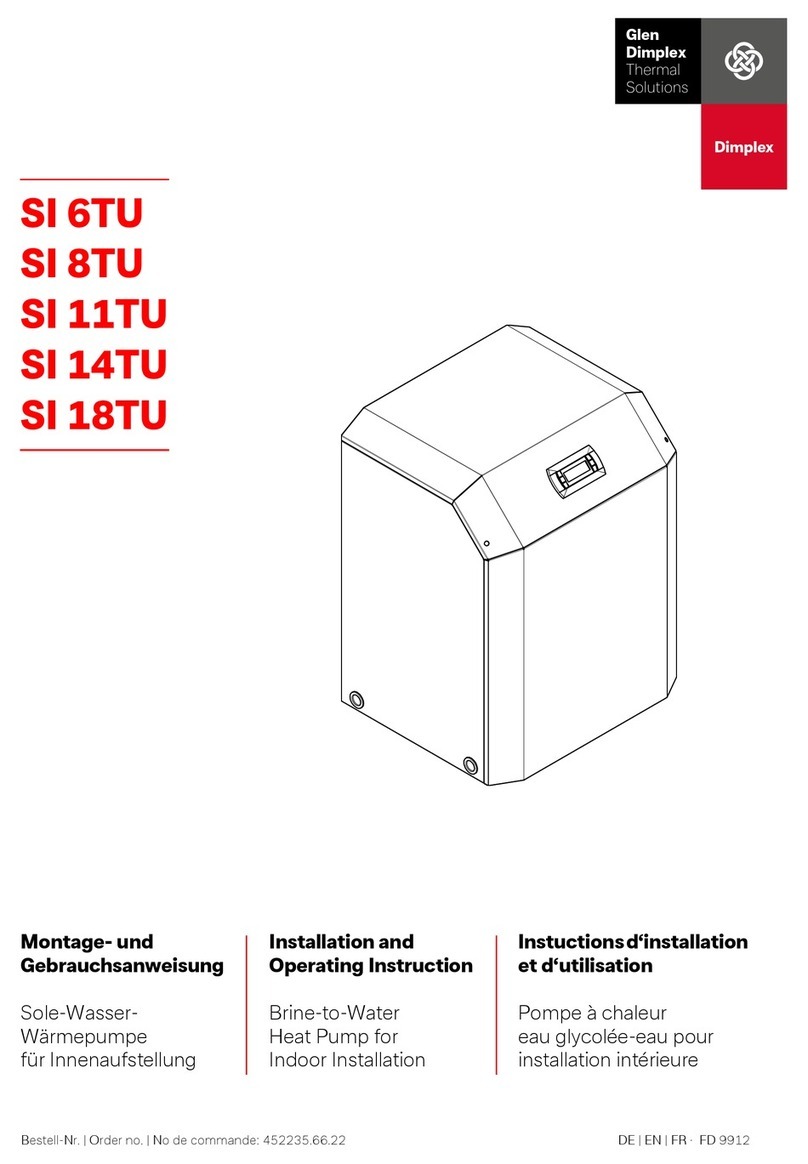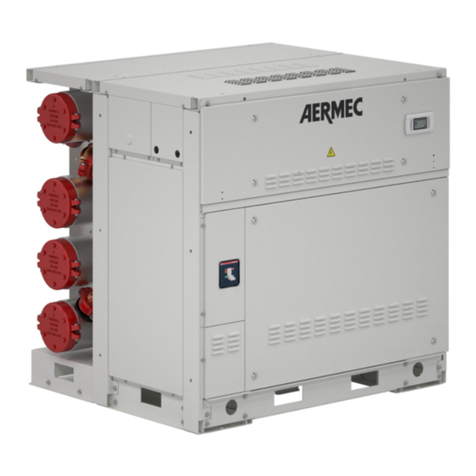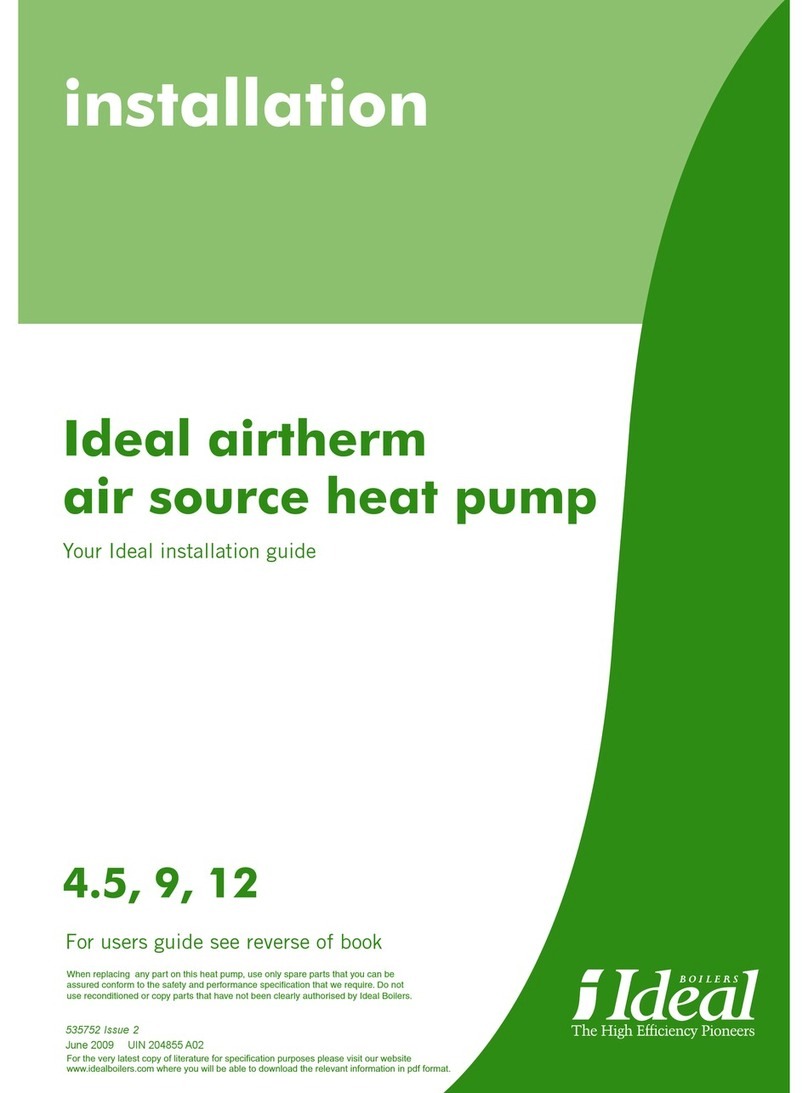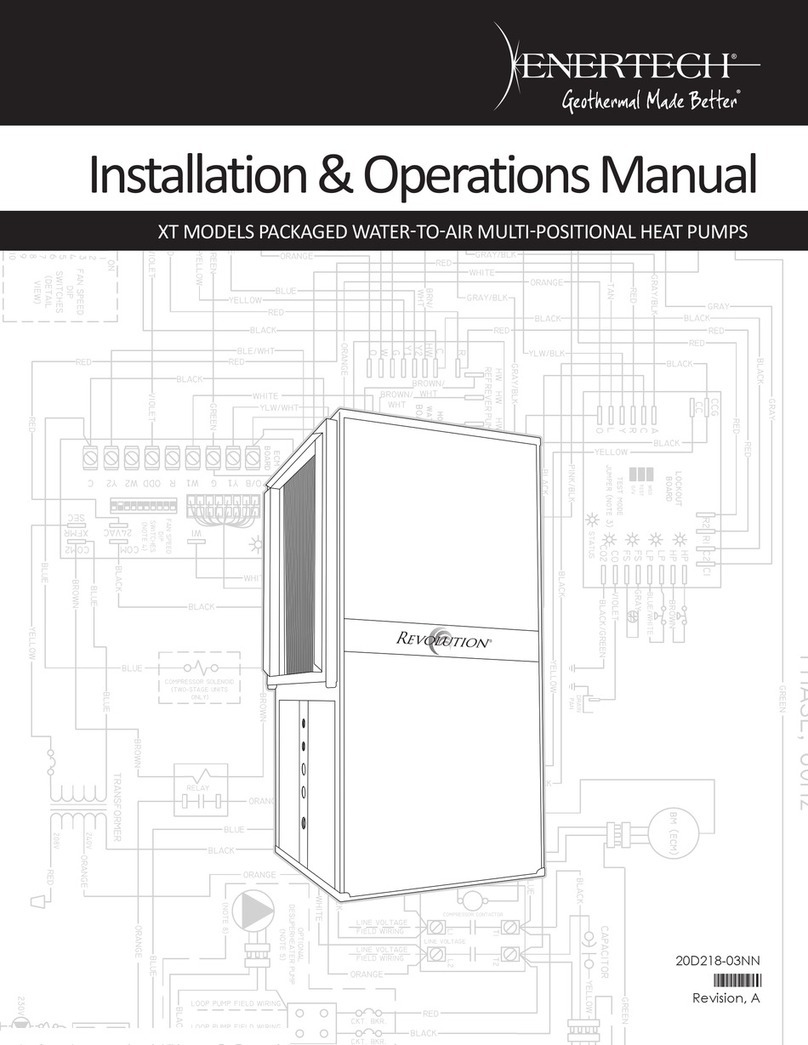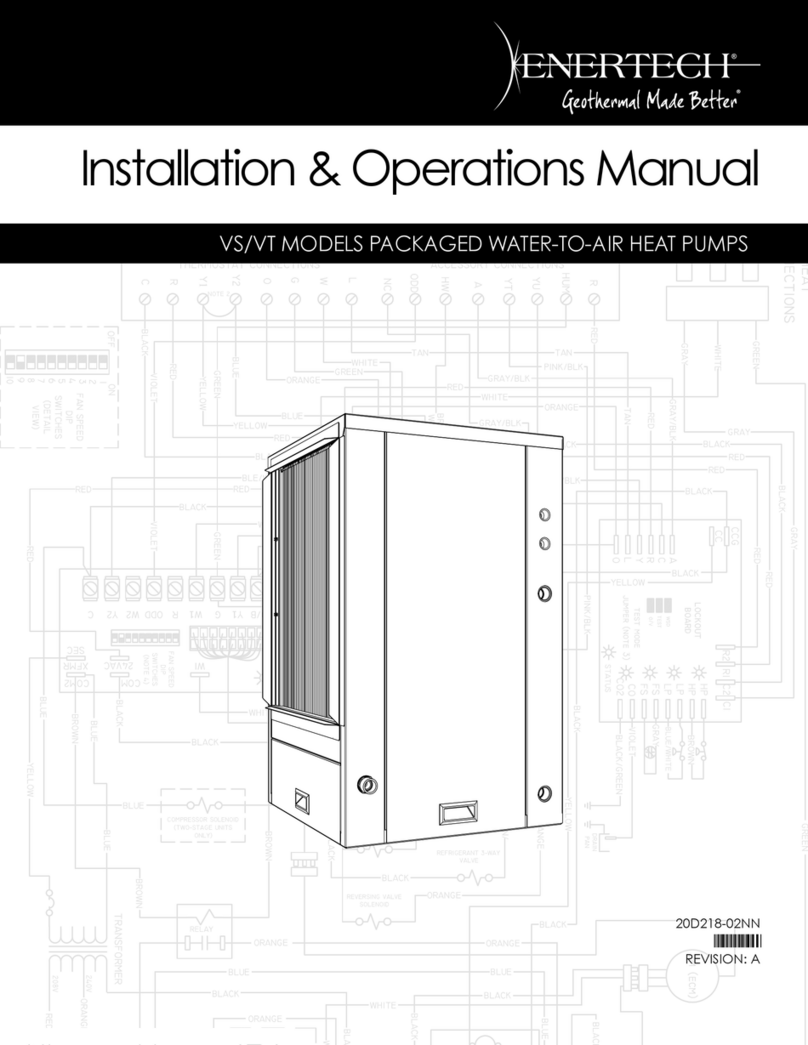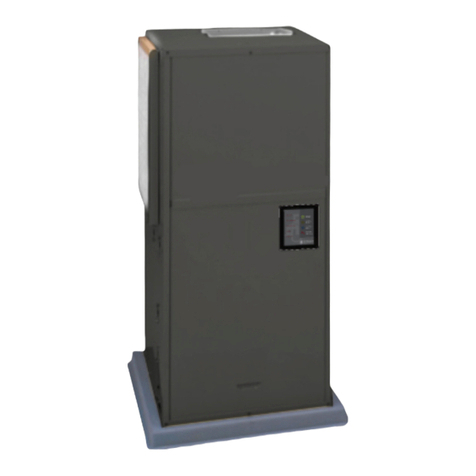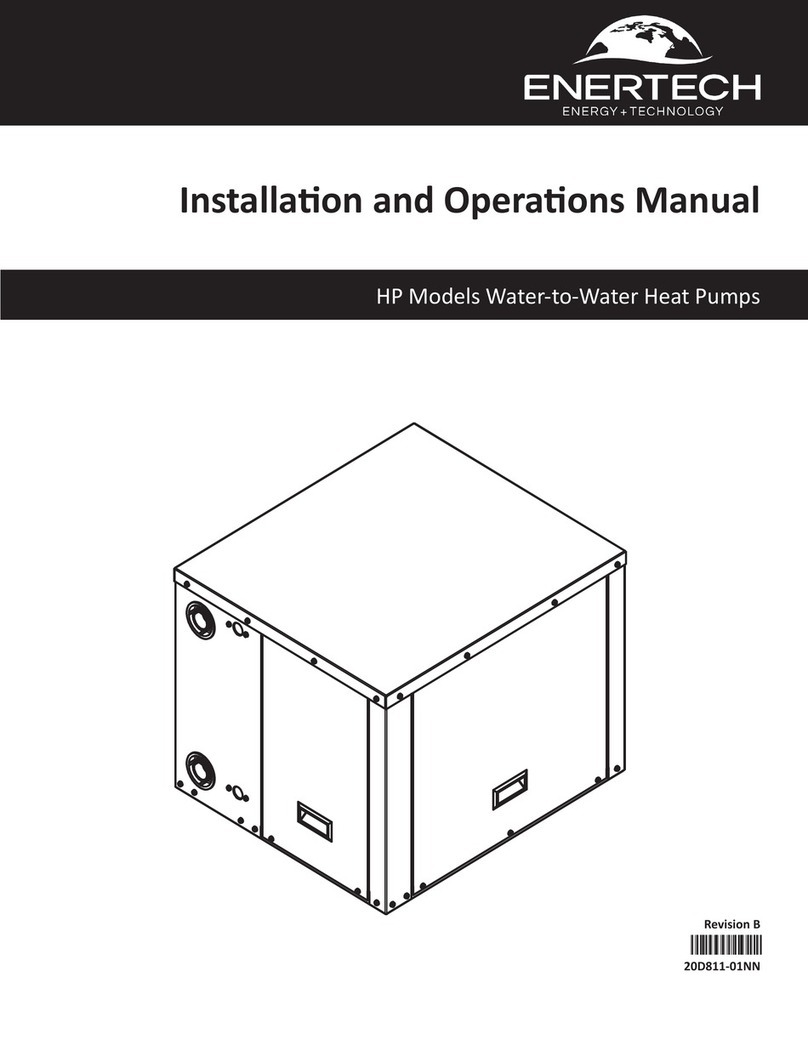
8
Enertech Global CT Models, Rev.: A
Consumer Instructions: Dealer should
instruct the consumer in proper operation,
maintenance, lter replacements, thermostat
and indicator lights. Also provide the consumer
with the manufacturer’s Owner's Manual for the
equipment being installed.
Enertech Global D-I-Y Policy: Enertech Global’s
geothermal heat pumps and system installations
may include electrical, refrigerant and/or water
connections. Federal, state and local codes
and regulations apply to various aspects of the
installation. Improperly installed equipment can
lead to equipment failure and health/safety
concerns. For these reasons, only qualied
technicians should install a Enertech Global built
geothermal system.
Because of the importance of proper installation,
Enertech Global does not sell equipment direct
to homeowners. Internet websites and HVAC
outlets may allow for purchases directly by
homeowners and do-it-yourselfers, but Enertech
Global offers no warranty on equipment that is
purchased via the internet or installed by persons
without proper training.
Enertech Global has set forth this policy
to ensure installations of Enertech Global
geothermal systems are done safely and
properly. The use of well-trained, qualied
technicians helps ensure that your system
provides many years of comfort and savings.
Equipment Installation: Special care should
be taken in locating the unit. All vertical units
should be placed on a level surface on a
vibration absorbing pad (air pad) slightly larger
than the base of the unit. Downow units should
be placed on a non-combustible base. Flex
connectors should also be installed in between
the ductwork and the unit. All units should be
located in an indoor area were the ambient
temperature will remain above 55°F and should
be located in a way that piping and ductwork
or other permanently installed xtures do not
have to be removed for servicing and lter
replacement.
Electrical: All wiring, line and low voltage,
should comply with the manufacturer's
recommendations, The National Electrical
Code, and all local codes and ordinances.
Thermostat: Thermostats should be installed
approximately 54 inches off the oor on an
inside wall in the return air pattern and where
they are not in direct sunlight at anytime.
Loop Pumping Modules: Must be wired to the
heat pump’s electric control box. A special
entrance knockout is provided below the
thermostat entrance knockout. A pump
module connection block, connected to
the master contactor, and circuit breaker is
provided to connect the Pump Module wiring.
Desuperheater Package: Water heating is
standard on all residential units (units may be
ordered without). It uses excess heat, during
both heating and cooling cycles, to provide
hot water for domestic needs. A double wall
desuperheater exchanger (coil) located
between the compressor and the reversing
valve, extracts superheated vapor to heat
domestic water; while satisfying its heating and
cooling needs. The water circulation pump
comes pre-mounted in all residential units, but
must be electrically connected to the master
contactor. Leaving it unconnected ensures that
the pump is not run without a water supply.
The Desuperheater package can make up to
60% (depending on heat pump usage) of most
domestic water needs, but a water heater is still
recommended.
Desuperheater Piping: All copper tubes & ttings
should be 5/8” O.D (1/2” nom) minimum with a
maximum of 50ft separation. Piping should be
insulated with 3/8” wall closed cell insulation.
Note: Copper is the only approved material for
desuperheater piping.
UV Light Usage:
The use of a UV light in the unit
return air plenum should be such that the light
does not have a direct line of sight to the air
coil of the unit. UV lights could cause internal
wiring, foam insulation, or other components to
deteriorate. It would be better to place the UV
light in the supply air plenum, or ductwork. This
also helps keep the light cleaner. Additionally, if
a humidier is installed and in line of the sight of
the UV light, consult the humidier install manual
for indication of whether the light will deteriorate
any parts of the humidier (like the pad).
Section 3: Installation Considerations




















